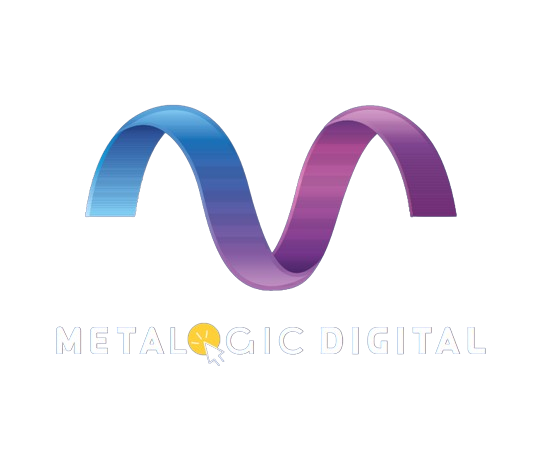Understanding Dynamic Pricing in E-Commerce
Dynamic pricing is an automated pricing strategy that determines the price of a product based on different parameters derived from customer data. It helps keep prices from changing against static pricing, which remains unchanged over a period.
How Does AI Power Dynamic Pricing?
When it comes to defining dynamic pricing strategies, AI is a mainstream technology used to automate and optimize the pricing strategies of e-commerce companies. It enables real-time pricing decisions based on data analytics and machine learning algorithms. Here is how AI improves dynamic pricing for e-commerce:
Real-Time Data Analysis
AI collects and analyzes data within a fraction of a second, including customers’ behavior, competitors’ pricing, and market trends. Thus, businesses can change their prices in an instant instead of taking a little longer to do so manually.
Predictive Analytics
Machine learning algorithms analyze historical patterns and demand, setting the highest and lowest price points. For instance, AI can forecast demand spikes around the holidays and set prices accordingly.
Competitive Pricing Analysis
AI assists companies in tracking competitor pricing in real-time, enabling them to stay competitive. A price adjustment helps e-commerce companies offer competitive prices without sacrificing profit margins.
Personalized Pricing
Artificial intelligence allows customer-value-based pricing. Pricing is based on online or offline browsing history, previous purchases, and customer engagement levels. Special discounts may be offered to loyal customers, while new customers may be introduced to the product through introductory offers.
Price Elasticity Optimization
Using price sensitivity analysis means that dynamic pricing will utilize AI technology to inform pricing decisions. It allows businesses to make necessary price adjustments without turning customers away, while still maximizing revenue.
How MetaLogic Digital Helps
MetaLogic Digital specializes in AI-powered e-commerce solutions, including dynamic pricing strategies. Our advanced AI-driven tools and expertise help businesses:
More Revenue. Fewer Users. One Smart SEO Move — XTWO Store’s Turnaround with MetaLogic Digital
XTWO Store was losing traffic—but not hope. They partnered with MetaLogic Digital to shift focus from just more clicks to smarter conversions. By combining CRO-driven SEO, UX improvements, and high-intent keyword targeting, revenue increased by 153.94%, and purchases rose by 329%, all with fewer users than before.
Because smart strategy > more spend.
That’s the power of precision—and it pairs perfectly with AI-driven pricing.
Benefits of Dynamic Pricing AI
Increase in revenue and profit margin.
Sold goods are based on demand, which in turn ensures maximum turnover with correct price-setting at the right moment.
Competitive Edge
With current real-time competitive monitoring, the improvement of price strategy has been noted to benefit customers while still being profitable.
Increased Customer Contentment
Demand-based or individualized pricing helps ensure that customers get valued prices and builds recognition and loyalty toward the brand in the long run.
Adapting price points in real-time
The automation of the whole pricing system saves time and resources for firms while achieving optimal pricing.
Better Inventory Management
Dynamic pricing based on stock levels helps businesses avoid overstocking or stockouts, thereby bolstering their operations.
How to Implement AI-Based Dynamic Pricing
Dynamic pricing will involve key steps in eager fulfillment and implementation of this in AI technology.
Choose the Right AI Pricing Tool
Select the one that aligns best with your business objectives and integrates with your e-commerce platform. Well-known tools include Prisync, Competeera, and RepricerExpress.
Define Pricing Rules and Strategies
Set clear pricing rules based on market demand, competitor prices, and profit margins. AI can be configured to follow these predefined guidelines while optimizing pricing in real time.
Track changes in the market and competitor prices
Monitor competitor pricing, customer behavior, and market demand to adjust pricing strategies continually.
Test and Optimize Pricing Models
A/B testing is used to evaluate various pricing strategies and observe their impact on sales and revenue.
Transparency and Compliance
Be transparent in your pricing strategies to gain sufficient trust and avoid violating industry rules.
Challenges of AI-Based Dynamic Pricing
Even though AI-based dynamic pricing holds many benefits, much of the time, it brings with it its share of challenges:
- Customer Dissonance – Frequent price changes may lead to customer annoyance and distrust.
- Risk of Price Wars – Automated pricing adjustments could lead to a price war among competitors, negatively impacting profitability.
- High Cost of Implementation – The initial investment in AI-powered tools can be prohibitive for many immature businesses.
- Accuracy and Security of Data – AI pricing innovative solutions are only as good as the data security and accuracy in making informed decisions regarding pricing.
- Compliance with Regulations – A well-defined pricing policy must be established to ensure that the legal framework, binding after approval, is not violated.
Future Trends in AI-Powered Dynamic Pricing
AI and machine learning are showing exciting developments in the future of dynamic pricing, driven by e-commerce. A few trends to watch are:
- Hyper-Personalization – Pricing powered by AI will become more consumer-oriented, offering a unique price according to individual shopping behavior.
- Blockchain Integration – Assurance of the secure and transparent transaction through blockchain technology adds an element of trust to the dynamic pricing model.
- AI Chatbots and Price Negotiation – AI chatbots would negotiate real-time prices directly with customers based on their purchasing intent.
- Voice Commerce Optimization – AI analyzes voice search data to establish competitive pricing for voice-assisted shopping experiences.
- Pricing with the Influence of Augmented Reality – AI may dynamically adjust pricing through AR-based shopping experiences to reflect customer interaction.
Conclusion
AI dynamic pricing is the next big thing in the e-commerce world. It is helping businesses keep pace with fierce competition in a fast-moving market. The collection of real-time data and analysis, combined with predictive analytics and personalized pricing, enables companies to establish effective pricing strategies that maximize profit while satisfying customers.
With solutions from MetaLogic Digital, businesses can deploy effective dynamic pricing, enabling AI-powered pricing to fund the automation of decision-making and gain a competitive advantage in e-commerce.
Frequently Asked Questions

Dynamic pricing leverages AI to dynamically adjust the price of specific products in response to market trends, competitor pricing, and customer behavior.
Artificial intelligence enables data analysis, demand prediction, competitor monitoring, and the optimization of pricing strategies to maximize revenues and stay competitive.
Yes, there are risks here, including perception problems with customers, price wars, high implementation costs, and complex regulatory compliance issues.
The sectors that gain the most benefit from AI-based dynamic pricing models include e-commerce, travel, hospitality, and entertainment.
Yes, small businesses can improve their optimized pricing business models with reasonably priced AI-enabled pricing tools.





